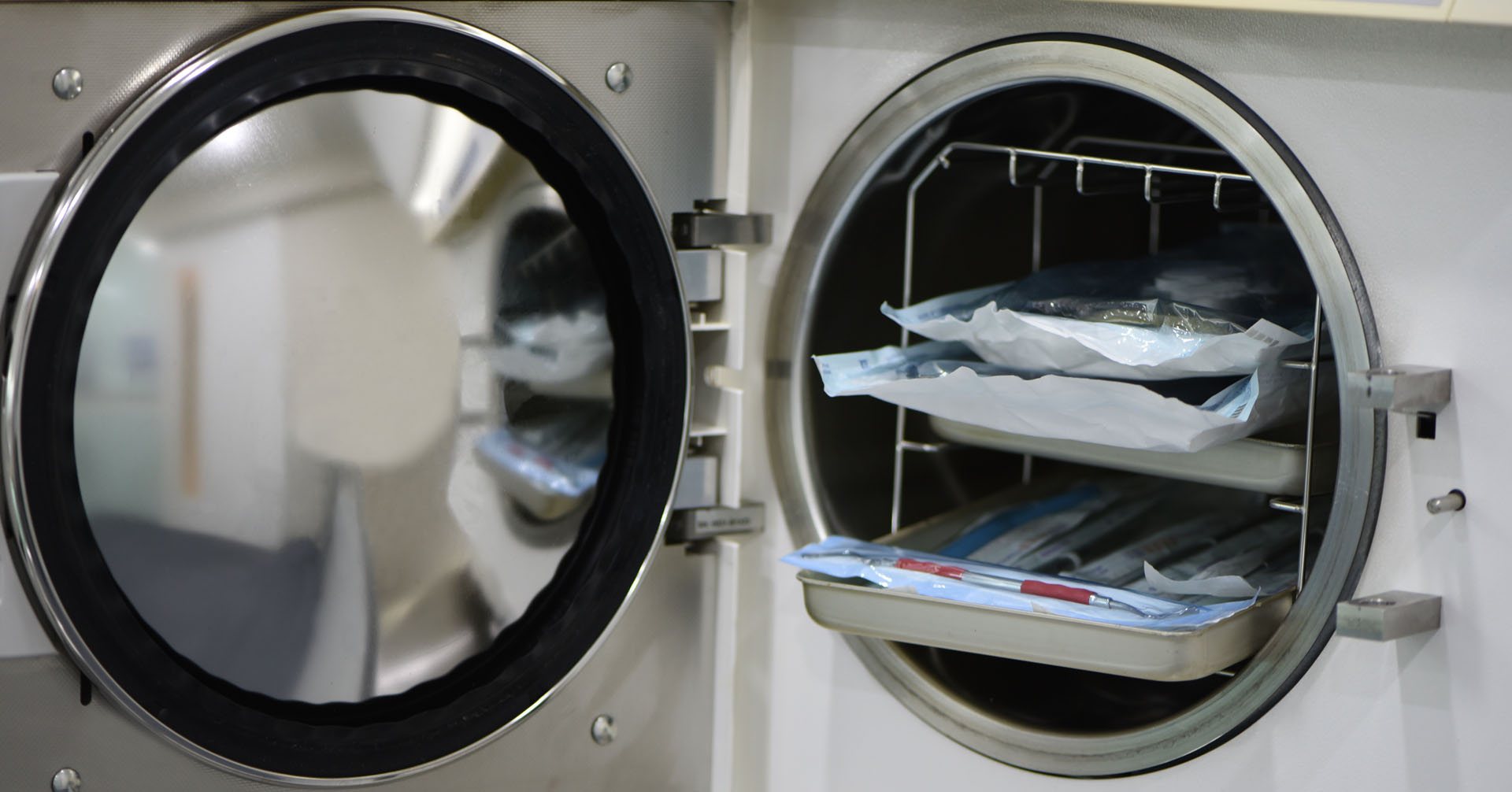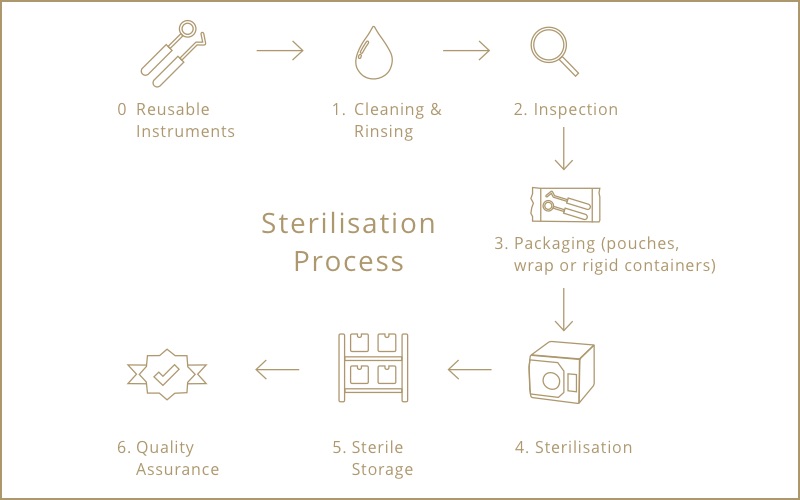
CLEANING, DISINFECTION, AND STERILISATION
Another important standard precaution designed to
Ultimately, two key points in
- Sterilisation of all reusable instruments and devices must be done after each patient.
 All reusable items to be used on each patient should be clean and sterile, particularly surgical instruments that penetrate soft tissue and bones. According to international guidelines, dental instruments can be classified into three categories depending on the risk of transmitting infection – critical, semi-critical and non-critical instruments.
All reusable items to be used on each patient should be clean and sterile, particularly surgical instruments that penetrate soft tissue and bones. According to international guidelines, dental instruments can be classified into three categories depending on the risk of transmitting infection – critical, semi-critical and non-critical instruments.
Critical instruments are surgical and other instruments that penetrate soft tissue and bones (e.g. forceps, scalpels, bone chisels, scalers, and surgical burs).
Semi-critical instruments are instruments that do not penetrate soft tissues or bone but have contact with mucous membranes or non-intact skin, (e.g. mirrors, reusable impression trays and amalgam condensers).
Non-criticaI instruments are instruments that come into contact only with intact skin (e.g. external components of x-ray heads, blood pressure cuffs and pulse oximeters).
It is crucial for dentists to understand and identify the instruments under the different categories and to know which instruments or items that must be sterilised following the correct sterilisation and disinfection procedures to ensure the spread of infections is minimised. As a general rule, all critical and semi-critical dental instruments that are heat resistant should be sterilised after each use by steam sterilisation (autoclaving). If sterilisation is not feasible for any of these item, then, high level disinfection is to be done.
Steam sterilisation is one of the most widely used and most dependable processes for sterilising instruments. This method of sterilisation uses intense heat that comes from steam. 1.Oswald N. 5 Laboratory Sterilisation MethodsPressurised steam has a high latent heat. (Latent heat is heat that is required to convert solid into liquid or vapour, or liquid into vapour, without change of temperature.) At 100degC, pressurised steam holds 7 times more heat than water at the same temperature. Dropping surgical and other instruments into boiling water or wiping them down with alcohol does not necessarily sterilise the instruments.
- The sterilisation process.
Sterilisation must be done in accordance with proper international standards and guidelines. Often, complications arise in many surgeries due to improper sterilisation. A whole task of sterilising instruments can be rendered ineffective if sterilisation guidelines are not strictly followed, putting patients’ health at risk. A proper sterilisation process should include the following steps. (Refer Image)
Tips:
Having a good thorough clean of your teeth before a surgical procedure (such as an implant) helps minimise the cause of a dental healthcare associated infection. Our mouths are home to entire communities of microorganisms even if we cannot see them, feel them or taste them. Bacteria in our mouths can get into our bloodstream during certain dental procedures. Getting a good thorough clean before a surgical procedure helps minimise the risk of an infection and reduce the need for high doses of antibiotics. Read more on the effects of antibiotics here.
So, the next time you visit your dentist for a surgical procedure, such as an implant; consider carefully the importance of a good sterilisation practice, coupled with a thorough cleaning procedure. It just might save you from a second surgery to remove an infection, which is costly and can cause life threatening complications.
| 1. | ↑ | Oswald N. 5 Laboratory Sterilisation Methods |
Copyright © World Dental Alliance. All rights reserved.
References
| 1. | ↑ | Oswald N. 5 Laboratory Sterilisation Methods |


